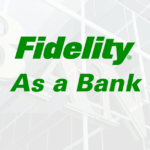Fidelity offers multiple cash investments that will safely earn you 5% returns annually on your cash. This return is much higher than what you’ll get from your bank or savings account and is a simple way to generate more passive income. We’ll begin by giving an overview of Fidelity money market funds, then touch on buying Treasury bills and brokered CDs on Fidelity’s platform. Finally, we’ll review ultra short-term Treasury ETFs, which represent some of the best options for parking cash, in our opinion.
Fidelity Money Market Funds
Money market funds hold a portfolio of short-term and highly liquid investments. Fidelity offers three types of money market funds:
- Government & Treasury money market funds
- Prime money market funds
- Municipal money market funds
This article will cover the first two fund types since municipal money market funds are based on the purchaser’s location.
We’ll only review the funds with a minimum investment of $0. Fidelity has money market fund versions targeted at high-net-worth individuals and institutional investors, but these funds have minimum investments starting from $100,000.
Government Money Market Fund
Fidelity offers four government money market funds with no minimum investment. These are:
- SPAXX (Fidelity Government Money Market Fund)
- FDRXX (Fidelity Government Cash Reserves)
- FZFXX (Fidelity Treasury Money Market Fund)
- FDLXX (Fidelity Treasury Only Money Market Fund)
These four funds each hold a different amount of U.S. Treasury bills, short-term debt backed by U.S. Treasuries, and other U.S. government debt such as agency bonds (e.g., Fannie Mae). Treasury bills are considered the safest investments in the world because the U.S. government guarantees that it will repay the money it borrows.
- SPAXX is the most popular money market fund that Fidelity offers because it’s the default core position in Fidelity brokerage and retirement accounts. A core position is where Fidelity automatically sweeps uninvested cash to earn yield.
- FDRXX is almost identical to SPAXX, except its expense ratio is generally lower. FDRXX is a core position option that’s available only for retirement accounts. If you have a retirement account with Fidelity, we believe this is a better core position than SPAXX.
- FZFXX is a Treasury money market fund. It invests in T-Bills and short-term debt backed by T-Bills, but it’s a degree safer than SPAXX and FDRXX, which invest in non-U.S. Treasury debt such as U.S. government agency bonds. As a result of its more secure holdings, its yield is usually lower than the other two funds.
- FDLXX is the Fidelity Treasury Only Money Market Fund. As the name implies, it only invests in Treasury bills. It’s the safest of the four but also offers the lowest returns. FDLXX cannot be used as a core position. FDLXX’s returns are state tax-free since it only holds Treasury bills.
Fidelity’s government money market funds are its most popular money market funds, primarily due to their safety and viability as a core position.
Prime Money Market Fund
Fidelity only has one prime money market fund with no minimum investment: SPRXX, also called the Fidelity Money Market Fund.
SPRXX invests in riskier assets than the government money market funds. While the bulk of SPRXX’s holdings are still U.S. Treasury bills and other U.S. government debt, it will also hold very short-term company debt such as CDs and short-term debt from banks and financial institutions. Because these assets are riskier, SPRXX pays a higher yield than Fidelity’s government money market funds.
Fidelity Money Market Funds vs. Money Market Funds From Other Brokerages
If you have accounts at other brokerages, Fidelity money market funds can yield less than some brokerage counterparts like Vanguard and Schwab, primarily because Fidelity funds have higher expense ratios.
For example, we can compare Vanguard’s VUSXX to Fidelity’s FDLXX, both Treasury-only money market funds. FDLXX pays 4.94% with an expense ratio of 0.42%, while VUSXX has a yield of 5.28% with an expense ratio of 0.09%. The caveat is that Vanguard requires a minimum investment of $3,000 for its money market funds, while Fidelity has no such requirement.
Our Opinion on Fidelity Money Market Funds
Here is a table comparing the different Fidelity money market funds.
Best viewed on the desktop for a full comparison. Data as of November 2023.
Here’s our opinion if you want to make your lives simple while earning money market returns: Take advantage of Fidelity’s sweep feature by sticking with SPAXX if you have a regular brokerage account and FDRXX if you have a retirement account. FDLXX is worth considering if you live in a state with high taxes, but it requires manual buying and selling.
We want to mention that Fidelity money market funds are treated like cash. This means we can “sweep out” of any Fidelity market fund to buy another security, even if it’s not a core position. If we held $10,000 worth of SPRXX and wanted to buy $3,000 of Apple stock, Fidelity would automatically sell $3,000 worth of SPRXX to fund our purchase of Apple stock instantly. Fidelity money market funds let us stay 100% liquid while earning cash returns!
Your decision to choose which money market fund to invest in will depend on your brokerage preference, desire for higher yields, and the amount of money you want to invest.
Treasury Bills on Fidelity
The second way to earn higher cash returns on Fidelity is to buy Treasury bills ourselves. Fidelity money market funds hold a lot of Treasury bills, but it’s just as easy for us to buy Treasury bills directly on Fidelity’s platforms.
Treasury bills (or T-Bills) are U.S. Treasuries with a maturity of less than one year. Buying a T-Bill on Fidelity avoids the money market funds’ expense ratios. We’ll also benefit from state tax exemptions, which apply to all Treasuries.
However, Fidelity does not allow us to sweep in and out of T-Bills, like with money market funds. We have to buy and sell T-Bills ourselves manually. While there’s no fee to buy T-Bills on Fidelity, there’s a minimum investment of $1,000.
Brokered CDs on Fidelity
The third route for higher cash returns is to buy brokered CDs on Fidelity. Brokered CDs are a fancy name for bank CDs you buy at a brokerage such as Fidelity. Fidelity brokered CDs offer higher yields than normal bank CDs because Fidelity will negotiate with the banks to offer customers better rates.
The highest yield for Fidelity brokered CDs with a maturity of less than one year is well over 5%. Compare this to a Chase Bank CD that pays at most 3%. The highest Chase CD rate offered is 5%, reserved only for customers who invest a minimum of $100,000. With the bank CDs on Fidelity, you’ll earn more without such restrictions.
Be aware of two things when buying a brokered CD on Fidelity:
- These rates are guaranteed only if held to maturity. Some of these CDs are callable, meaning the bank issuing them can recall them early. This is typically done when rates decrease, so they don’t have to pay you as much. To prevent this, buy a non-callable CD that cannot be recalled by the bank.
- Brokered CDs are liquid, meaning you can sell them on Fidelity’s secondary marketplace before they mature. But Fidelity’s secondary CD marketplace isn’t always super active, and you might not get the price you want to sell your CD. Brokered CDs are still better and more liquid than regular bank CDs, which force you to pay an early withdrawal penalty.
Fidelity brokered CDs have a minimum investment requirement of $1,000. However, Fidelity has introduced a new type of fractional CD, which only requires a $100 minimum investment.
Ultra Short-Term Bond ETFs on Fidelity
The last way to earn higher cash returns on Fidelity is to buy ultra short-term bond ETFs, which offer some of the best combinations of high yields and liquidity. However, because they are newer, they are less commonly known and purchased than the previous investments we mentioned.
There are two main types of ultra short-term bond ETFs:
- Treasury ETF
- Floating rate Treasury ETF
Treasury ETFs hold very short-term Treasury bills, just like Treasury-only money market funds.
SGOV (iShares 0-3 Month Treasury Bond ETF) is the most popular Treasury ETF. SGOV was introduced in 2020 and holds T-Bills with a maturity of 3 months or less.
Floating rate Treasury ETFs, on the other hand, hold Treasury floating rate notes that always reflect the latest 3-month T-bill rate, which resets every week. In simple terms, you are always getting the most up-to-date 3-month T-Bill rate by holding these ETFs. As interest rates rise, floating rate Treasury ETFs pay higher interest payments. If rates fall, the payments decrease.
The most popular floating rate Treasury ETFs are USFR (WisdomTree Floating Rate Treasury Fund) and TFLO (iShares Treasury Floating Rate Bond ETF).
Comparing Our Cash Returns Options on Fidelity
We’ve now reviewed the main types of investments to consider for higher cash returns on Fidelity: money market funds, Treasury bills, CDs, and ETFs.
To compare your options on Fidelity, we put together the table below that compares each investment’s yield, fees and costs, minimum investments, “sweep” features, and tax benefits, if any.
Best viewed on the desktop for a full comparison. Data as of November 2023.
To sum it all up, simply moving your cash from your bank to Fidelity is a huge win. You don’t need to do anything to earn SPAXX returns with Fidelity’s automatic sweep feature.
You might wonder why you’d buy Fidelity money market funds instead of ultra short-term bond ETFs if these ETFs offer higher rates.
The answer lies in liquidity. While these ETFs are liquid enough, they still take two business days to settle. While traditional money market funds have a one business day settlement time (T+1), Fidelity treats its money market funds as cash. That means Fidelity money markets settle the day you sell (T+0). Fidelity customers can “sweep out” of any Fidelity money market fund to access cash instantly or to purchase another investment.
Using these money market funds makes Fidelity an ideal brokerage to replace your traditional bank account. However, some may feel that the trade-off in yield is worth executing trades manually with the ETFs. As long as you can manage your liquidity appropriately, Fidelity offers multiple cash options that are superior to over-saving in a bank account.






